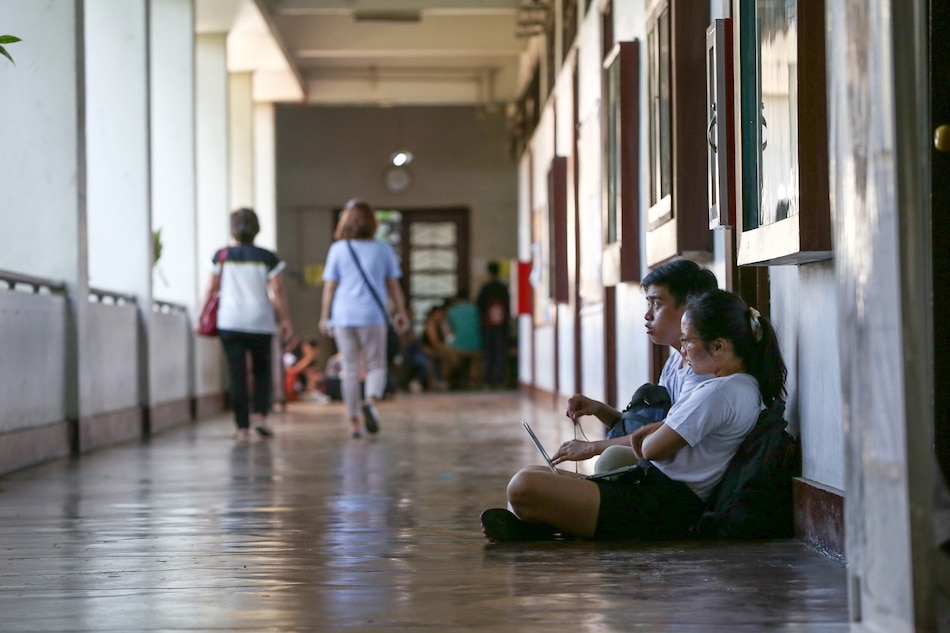MANILA — Seventy-six percent of Filipino youths aged 15 to 30 believe their “quality of life will improve,” based on the results of the National Youth Survey 2021 presented on Friday, and conducted by the Youth Leadership for Democracy (YouthLed) and the Social Weather Stations (SWS).
This is higher than the 46 percent net optimism score in April 1996.
Meanwhile, 18 percent said their lives will stay the same, while four percent said their lives will worsen.
Sixty-seven percent said they have good health, which is higher than the 63 percent recorded among adults (18 years old and above) in June 2019.
The most important aspirations and life goals include helping parents and sibling/s financially (38 percent), living independently from parents (11 percent), getting a college degree (9 percent), starting own business (8 percent), having meaningful work (7 percent), and having a job that earns a lot of money (6 percent).
DepEd Asec. Dexter Galban said the results of the survey will help the agency in crafting policies that would, in turn, help the youth reach their aspirations.
“We are very fortunate right now that – for the very first time since its inception – the Department of Education now has an office, an executive committee member-office, focused on youth affairs and special concerns. Primarily to really look into the development, the formation, the journey of young people as they become part of society’s sphere,” Gablan said.
“There would be a need to better understand how they (youth) talk, how we can communicate to them, how we are able to translate all these complex ideas from government, from the private sector, from civil society into easily consumable content for them,” he added.
The survey took place from March 14 to 29, 2021, with 4,900 participating Filipino youths.
Thirteen percent of respondents are from Metro Manila, 44 percent are from Balance of Luzon (areas in Luzon outside Metro Manila), 19 percent from Visayas, and 24 percent from Mindanao.
Majority of respondents are from Class D (81 percent), followed by Class E (15 percent), and Class ABC (4 percent).
Pressing issues
For 16 percent of respondents, COVID-19 response and protocols are top of mind when it comes to important local and community issues.
This was followed by public works/infrastructure, peace and order/crime, environmental problems, employment and livelihood, and governance/corruption.
Meanwhile, a leader who has a vision and plan topped the list of most preferred traits of electoral candidates, at 53 percent.
Other traits include a leader who helps the poor, is hardworking, intelligent, has a clear stance on important issues, and has accomplished a lot as an elected official.
But, majority have not yet voted in national, local, barangay or Sangguniang Kabataan elections, with 42 percent saying they have voted in national or local elections.
Thirty-three percent said they are registered but have not yet voted, while 25 percent have not yet registered.
Seventy percent were satisfied with Philippine democracy, which is an increase of 15 percent from April 1996 which was at 55 percent satisfaction.
Filipino youth satisfaction was lower compared to June 2019 survey of Filipino adults, which was at 78 percent.
Traditional and social media
Ninety-nine percent of respondents are users of traditional media.
Three in every 4 young Filipinos watch news on TV at least once a week – 39 percent watch news on TV daily, 32 percent a few days per week, and 9 percent weekly.
Radio is a less preferred medium: 13 percent listen to the news daily, 20 percent a few days per week, 8 percent weekly, 52 percent said not even once a week, and 6 percent never used radio.
Newspapers were the least preferred: 70 percent read the newspaper not even once a week, while 17 percent never read newspapers.
Meanwhile, 38 percent use social media to look for news daily, 33 percent a few days per week, and 11 percent weekly.
Twenty-nine percent use chat apps to look for news daily, 20 percent a few days per week, and 6 percent weekly.
Youth find traditional media more reliable and factual than social media – 72 percent found the news presented in traditional media as reliable and factual, while 49 percent found news on social media as reliable.
Less than a third always verify the factuality of information they gathered, 22 percent from traditional media users and 27 percent from social media users.


